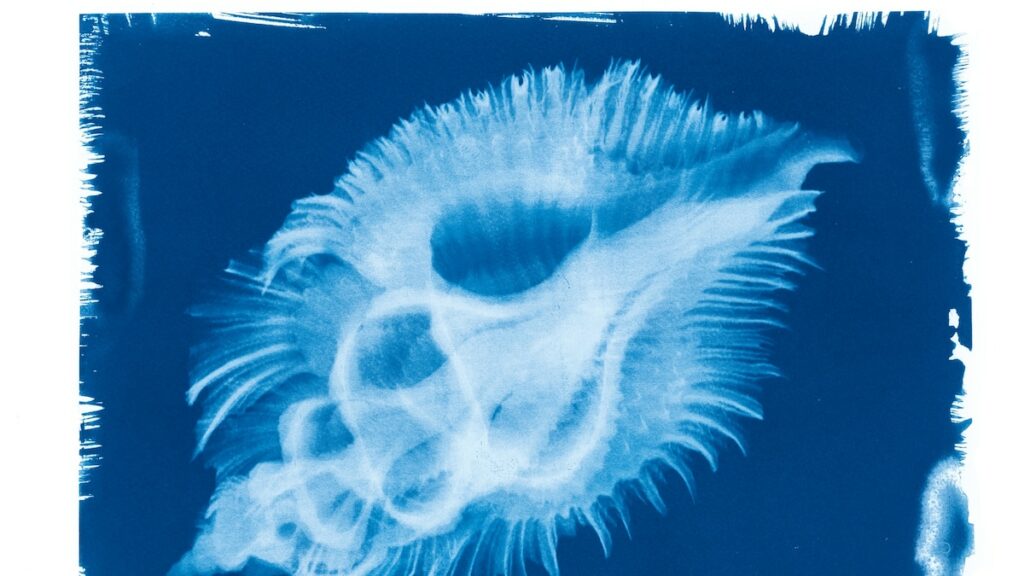You can see it in the logarithmic whorl of a nautilus. The milky iridescence of an abalone. The spiked turret of a queen conch. Precision, elegance, strength. The seashell is a consonance of form and function that both rivals and guides human creativity. From Botticelli’s “Birth of Venus” to Frank Lloyd Wright’s design for the Guggenheim Museum in New York, shells have inspired artists and architects throughout history. Our admiration for seashells even predates writing. Archaeologists in Israel recently unearthed the remains of a clamshell necklace made about 120,000 years ago.
As enduring as our fascination with seashells are the mysteries they hold. How did such complex and beautiful structures come into existence? Evolution by natural selection can help explain why shells became widespread among mollusks, but it cannot fully elucidate how an individual creature builds a skeleton as exquisite as, say, the exceptionally spiny shell of a Venus comb murex. To truly understand the seashell, we must peer beneath its biology to the underlying math and physics. In recent years, scientists undertaking such work have developed a considerably more sophisticated understanding of the physical forces that guide shell formation. Innovative studies by Derek Moulton, a professor of applied mathematics at the University of Oxford, and his colleagues have revealed that much of the astonishing variety of seashells can be explained by a few simple mathematical principles.
Every mollusk’s body is surrounded by a mantle, a cloaklike organ that secretes calcium carbonate and mixes it with a scaffolding of protein to form a shell one layer at a time. As a mollusk expands its shell, it adds new material to only one area: the opening, or aperture. Envision this as a circle. If, with each new layer, a mollusk deposits a ring of material the same size as the aperture, its shell will lengthen into a cylinder. If, instead, the mollusk increases the circumference of each new ring, its shell will become a cone. By depositing more material on one side of the opening than the other, a mollusk can curve a cylindrical shell into a doughnut. Imagine gluing a stack of lopsided rings, one atop another—each thicker on its left side than its right. Instead of forming a neat cylindrical tower as uniform rings would, they’d arc to one side—like the wedges in a stone archway—and eventually make a loop. By rotating the points where the mantle secretes more or less material, a mollusk can twist such a loop into a spiraling tube.
While these straightforward mathematical rules account for many of the fundamental forms of seashells, a more convoluted set of interactions generates their most ostentatious features. Spines, knobs, and other ornaments arise from a mismatch between the growth rates of the soft-bodied mollusk’s mantle and its rigid shell. This mismatch creates bulges that are exaggerated with each new layer. The mantle’s relative growth rate and stiffness determine the length, thickness, and curvature of these projections. Such embellishments may initially form because of a combination of chance mutations and inescapable outcomes of the mechanical forces involved in shell growth. If they prove advantageous to a creature’s survival and reproduction, however, they may be perpetuated by natural selection, eventually becoming a prevalent trait.
Although we primarily prize shells for their aesthetic attributes, the animals they house value them for a more pragmatic reason: protection. About 540 million years ago, during a burst of evolutionary innovation known as the Cambrian explosion, predatory animals became much more numerous and proficient. Soft-bodied, slow-moving organisms found themselves in constant jeopardy. Around this time, marine mollusks evolved simple but robust shells to protect their vulnerable exposed tissues. In response, crustaceans, fish, and other predators developed more sophisticated weaponry and hunting techniques.
Eventually, the coevolution of predator and prey contributed to a dramatic increase in the diversity of mollusk shells. Some evolved particularly large and thick shells that only the strongest or craftiest animals could crack. Narrow openings, sometimes reinforced with doors called opercula, made it more difficult for predators to reach their prey. Tall spires allowed some mollusks to retreat even further from danger. Spikes, spines, and knobs thwarted pincers and jaws, as did smooth and slippery surfaces.
Seashells, then, are not purely constructs of either biology or physics, nor can they be adequately described by either mathematical modeling or Darwinian theory alone. The exacting, sculptural beauty of shells that we find so enchanting emerges from a confluence of geometry, mechanics, ecology, evolution, and luck. Every shell you’ve ever scooped out of the sand or marveled at in a museum is a palimpsest layered with secrets that science is still untangling—a physical manifestation of our planet’s complexity and splendor.
>>> Read full article>>>
Copyright for syndicated content belongs to the linked Source : National Geographic – https://www.nationalgeographic.com/science/article/how-shells-form-math-physics
